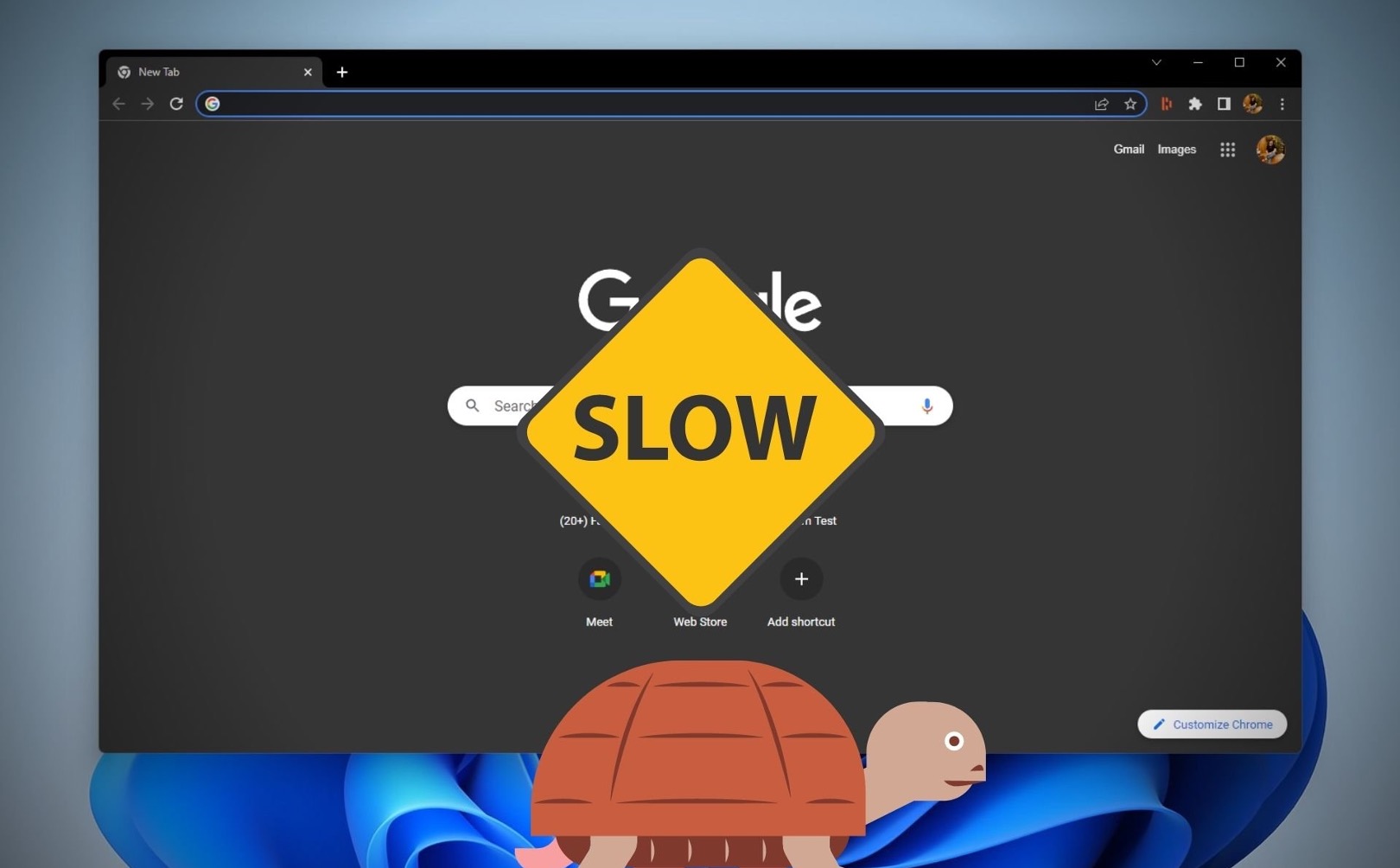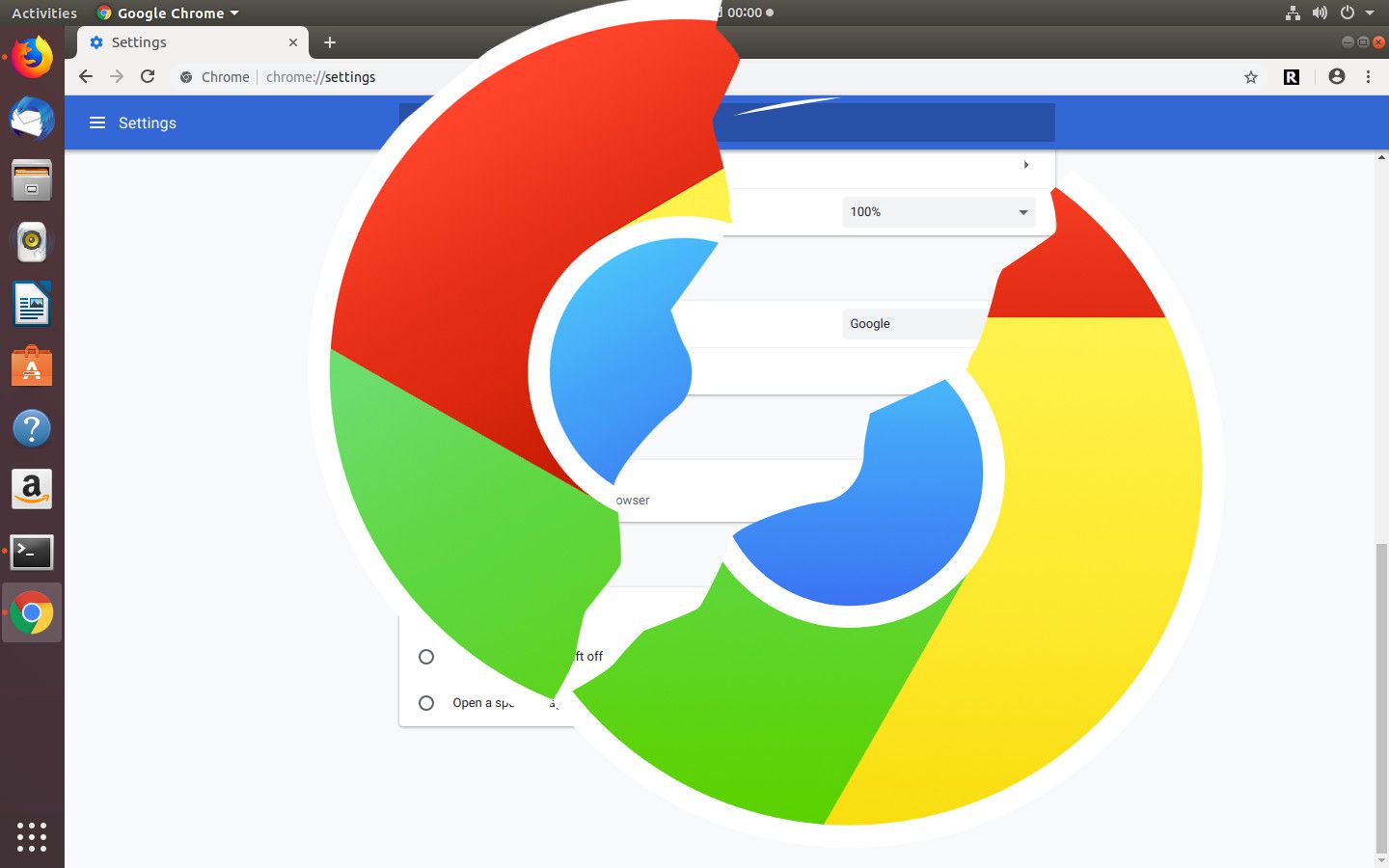Introduction
Google Chrome is one of the most popular web browsers, known for its speed, simplicity, and user-friendly interface. However, despite its many advantages, users may encounter instances where Chrome seems to be running slower than usual. This can be frustrating, especially when trying to browse the web efficiently. Understanding the reasons behind Chrome's sluggish performance can help users address these issues and optimize their browsing experience.
In this article, we will delve into the common factors that can contribute to Chrome's slowdown. By exploring these potential causes, users can gain valuable insights into how to improve the browser's performance and enhance their overall browsing experience. From memory management issues to the impact of outdated extensions, we will uncover the key factors that may be affecting Chrome's speed. Additionally, we will discuss practical solutions and tips to address these issues effectively.
As we embark on this exploration, it's important to recognize that Chrome's performance can be influenced by a variety of factors, both internal and external. By shedding light on these factors, we aim to empower users with the knowledge they need to troubleshoot and optimize their Chrome browsing experience. Whether you're a casual internet user or a seasoned professional, understanding the intricacies of Chrome's performance can help you make the most of this versatile web browser.
So, let's dive into the world of Chrome performance and uncover the reasons behind its occasional sluggishness. By the end of this article, you'll be equipped with practical insights and actionable tips to ensure that your Chrome browser operates at its optimal speed and efficiency.
Lack of Memory Management
One of the primary factors that can contribute to Chrome's sluggish performance is the lack of efficient memory management. As a web browser, Chrome relies on system memory to store and process a wide range of data, including web pages, extensions, and various background processes. When the available memory becomes insufficient, it can lead to noticeable slowdowns and unresponsiveness.
Chrome's multi-process architecture, which separates each tab and extension into its own process, can be both a strength and a potential source of memory-related issues. While this design enhances stability and security, it also means that Chrome may consume a significant amount of memory, especially when multiple tabs and extensions are active simultaneously.
When the system's memory resources are strained, Chrome may struggle to allocate and manage memory effectively, leading to performance degradation. Users may experience slow page loading times, unresponsive tabs, and overall system sluggishness as a result of inadequate memory management.
To address memory-related performance issues in Chrome, users can take several proactive steps. One effective approach is to identify and manage memory-intensive tabs and extensions. Chrome's built-in Task Manager provides a detailed overview of each tab and extension's memory usage, allowing users to identify and selectively close or disable resource-intensive elements.
Additionally, optimizing Chrome's memory usage can be achieved by reducing the number of open tabs and extensions, especially those that are not actively in use. By minimizing the overall memory footprint, users can help Chrome operate more efficiently and responsively.
Furthermore, keeping Chrome and its extensions up to date is crucial for addressing memory management issues. Developers often release updates that include performance optimizations and memory usage enhancements, which can significantly improve Chrome's overall responsiveness.
In some cases, users may consider utilizing browser extensions specifically designed to manage memory usage. These extensions can provide additional tools and insights to help users identify and address memory-related issues, further optimizing Chrome's performance.
By addressing the challenges associated with memory management, users can significantly improve Chrome's speed and responsiveness, ensuring a smoother and more efficient browsing experience. With a proactive approach to memory optimization, users can harness the full potential of Chrome while minimizing the impact of memory-related performance issues.
Too Many Open Tabs
One of the common habits among internet users is keeping multiple tabs open simultaneously while browsing. While this practice offers the convenience of quick access to various web pages, it can also significantly impact Chrome's performance, leading to noticeable slowdowns and increased memory usage.
When users have too many tabs open in Chrome, each tab consumes system resources, including memory and processing power. As a result, the browser may struggle to efficiently manage the multitude of active tabs, leading to slower performance and potential unresponsiveness.
The impact of having too many open tabs becomes more pronounced on systems with limited memory and processing capabilities. In such cases, Chrome may prioritize resources for active tabs, potentially deprioritizing background tabs. This can lead to delayed tab switching, slow page loading times, and an overall decrease in browsing efficiency.
To address the performance implications of having too many open tabs, users can adopt several practical strategies. One effective approach is to prioritize and manage active tabs, closing those that are no longer needed. By reducing the number of open tabs to a manageable level, users can alleviate the strain on Chrome's resources, leading to improved responsiveness and smoother browsing.
Additionally, users can leverage Chrome's built-in tab management features, such as tab grouping and bookmarking, to organize and streamline their browsing experience. Tab grouping allows users to categorize and visually separate tabs based on their relevance or topic, making it easier to navigate and manage multiple open tabs effectively.
Furthermore, users can explore browser extensions designed to optimize tab management and reduce memory usage. These extensions offer features such as tab suspension, which temporarily frees up memory by suspending inactive tabs without closing them. By utilizing such extensions, users can maintain a clutter-free browsing environment while minimizing the impact of having numerous open tabs on Chrome's performance.
By adopting these proactive strategies, users can mitigate the performance challenges associated with having too many open tabs in Chrome. By optimizing tab management and resource allocation, users can ensure a smoother and more efficient browsing experience, even when juggling multiple web pages simultaneously.
Outdated Browser or Extensions
An often overlooked yet significant factor that can contribute to Chrome's sluggish performance is the presence of outdated browser versions and extensions. As Chrome evolves through regular updates, outdated versions may struggle to deliver optimal performance, leading to compatibility issues, security vulnerabilities, and overall browsing slowdowns.
Outdated browser versions may lack the latest performance optimizations, bug fixes, and security enhancements introduced in newer releases. This can result in suboptimal browsing experiences, including slower page loading times, unresponsive tabs, and potential compatibility issues with modern web technologies and standards.
Similarly, outdated extensions, which add functionality and features to Chrome, can impact the browser's performance. As Chrome updates introduce changes to the browser's architecture and APIs, outdated extensions may encounter compatibility issues, leading to performance degradation and potential stability concerns.
To address the impact of outdated browser versions and extensions on Chrome's performance, users can take proactive measures to ensure that both the browser and its extensions are up to date. Chrome's automatic update feature simplifies this process by seamlessly delivering the latest browser updates to users, ensuring that they benefit from performance improvements and security patches.
Additionally, users can manually check for browser updates by accessing Chrome's settings and navigating to the "About Chrome" section. Here, users can initiate the update process, ensuring that they are running the latest version of Chrome to optimize performance and stability.
When it comes to extensions, users can review and update them through Chrome's extension management interface. By accessing the Extensions menu within Chrome's settings, users can verify the status of each extension and manually trigger updates if necessary. Removing outdated or unused extensions can also contribute to a streamlined browsing experience, reducing the potential performance impact of unnecessary or obsolete add-ons.
By prioritizing the maintenance of up-to-date browser versions and extensions, users can mitigate the performance implications of outdated software. This proactive approach not only enhances Chrome's speed and responsiveness but also ensures that users benefit from the latest security features and improvements, creating a more secure and efficient browsing environment.
In summary, staying vigilant about keeping Chrome and its extensions up to date is essential for optimizing the browser's performance and maintaining a seamless browsing experience. By embracing a proactive approach to software maintenance, users can harness the full potential of Chrome while minimizing the impact of outdated browser versions and extensions on performance.
Hardware Acceleration
Hardware acceleration is a feature that leverages the computational power of a device's hardware components, such as the GPU (Graphics Processing Unit), to offload certain tasks from the CPU (Central Processing Unit). In the context of web browsers like Chrome, hardware acceleration plays a crucial role in enhancing the rendering and performance of graphics-intensive tasks, including web page rendering, multimedia playback, and visual effects.
By utilizing the GPU for rendering tasks, hardware acceleration can significantly improve the speed and efficiency of visual elements within web pages, leading to smoother scrolling, faster loading times, and enhanced graphical performance. This is particularly beneficial for modern websites and web applications that incorporate rich multimedia content, dynamic visual effects, and complex graphics.
Enabling hardware acceleration in Chrome can be a strategic step to optimize the browser's performance, especially on devices equipped with capable GPUs. By offloading graphics processing to the GPU, Chrome can allocate more CPU resources to other essential tasks, leading to improved overall responsiveness and multitasking capabilities.
To enable hardware acceleration in Chrome, users can navigate to the browser's settings and access the advanced settings section. Within the "System" settings, users can locate the option to enable hardware acceleration, allowing Chrome to leverage the GPU for graphics rendering and related tasks.
It's important to note that while hardware acceleration can deliver significant performance benefits, its effectiveness may vary based on the specific hardware configuration of the user's device. Devices with powerful GPUs are likely to experience the most noticeable improvements in graphical performance and overall browsing speed when hardware acceleration is enabled.
However, users with older or less capable GPUs may not experience as pronounced of an impact. In some cases, enabling hardware acceleration on devices with limited GPU capabilities may even lead to compatibility issues or unexpected behavior, necessitating a cautious approach when enabling this feature.
By understanding the role of hardware acceleration and its potential impact on Chrome's performance, users can make informed decisions regarding its activation based on their specific hardware configuration and browsing requirements. When utilized effectively, hardware acceleration can serve as a valuable tool for optimizing Chrome's graphical performance and enhancing the overall browsing experience, especially on devices equipped with capable GPUs.
Background Processes and Extensions
In the realm of web browsing, Chrome's versatility and functionality are greatly amplified by its extensive library of extensions, which provide users with a diverse array of features and enhancements. However, the presence of numerous active extensions can exert a notable impact on Chrome's performance, particularly when combined with background processes running within the browser.
Background processes, including those initiated by extensions, play a pivotal role in Chrome's functionality, enabling tasks such as automatic updates, content preloading, and data synchronization. While these processes are designed to operate seamlessly in the background, they can collectively contribute to increased memory usage, CPU utilization, and overall system resource consumption.
When an abundance of extensions and background processes are active simultaneously, Chrome may encounter performance challenges, manifesting as slower page loading times, delayed tab switching, and heightened system resource utilization. This can be particularly evident on devices with limited memory and processing capabilities, where the cumulative impact of background processes and extensions becomes more pronounced.
To address the performance implications of background processes and extensions, users can adopt strategic measures to manage and optimize their presence within Chrome. One effective approach involves reviewing and selectively disabling or removing unnecessary or redundant extensions. By decluttering the extension ecosystem, users can streamline Chrome's resource allocation, leading to improved responsiveness and reduced memory overhead.
Additionally, users can leverage Chrome's built-in task manager to gain insights into the resource consumption of individual extensions and background processes. This tool provides a comprehensive overview of each process's memory and CPU usage, empowering users to identify and address resource-intensive elements that may be contributing to Chrome's sluggish performance.
Furthermore, users can explore the use of extension management tools that offer enhanced control over background processes and their impact on Chrome's performance. These tools provide features such as process suspension, allowing users to temporarily halt specific background processes to alleviate system resource strain and optimize browsing efficiency.
By proactively managing background processes and extensions, users can mitigate the performance challenges associated with their presence in Chrome. This strategic approach not only enhances the browser's speed and responsiveness but also fosters a more streamlined and efficient browsing experience, ensuring that users can make the most of Chrome's extensive feature set without compromising performance.
In summary, the careful management of background processes and extensions is essential for optimizing Chrome's performance and maintaining a seamless browsing experience. By adopting proactive strategies to streamline resource allocation and minimize unnecessary overhead, users can ensure that Chrome operates at its optimal speed and efficiency, even in the presence of numerous active extensions and background processes.

























